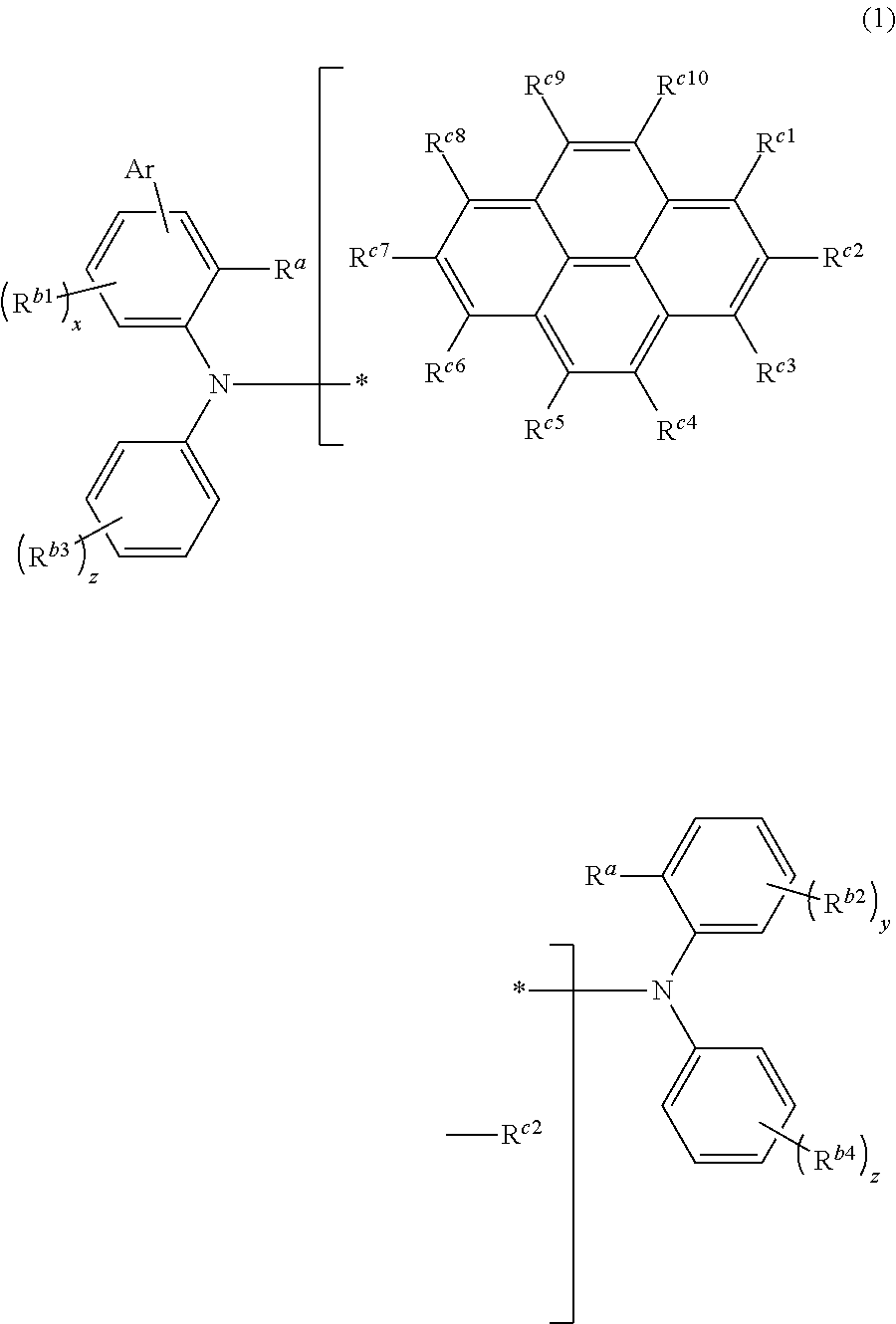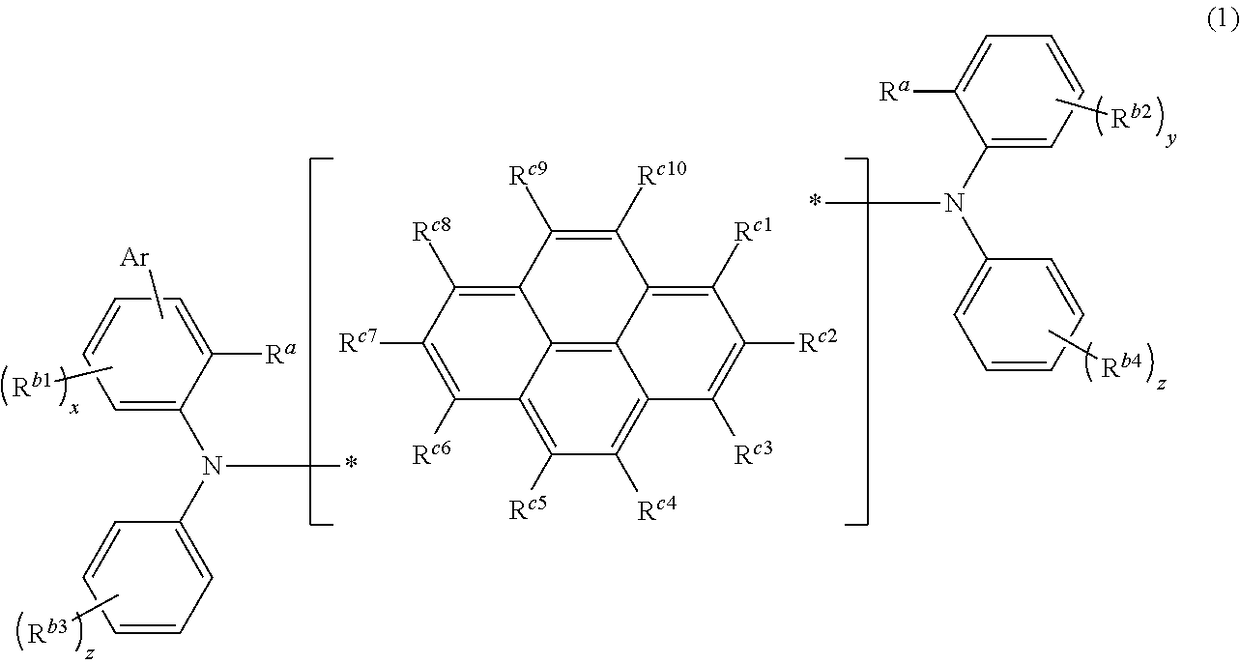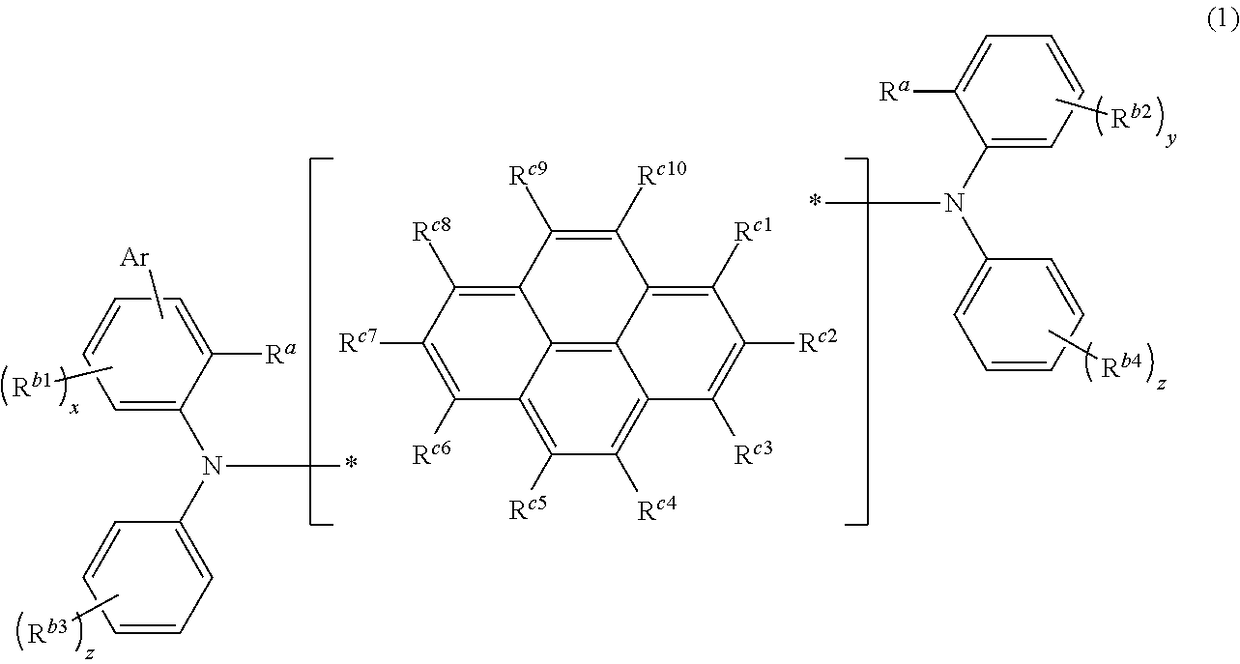Novel compound
a compound and organic technology, applied in the field of new compound and organic electroluminescence device, can solve the problems of low luminance, low luminous efficiency, and high driving voltage, and achieve the effect of excellent luminous efficiency
- Summary
- Abstract
- Description
- Claims
- Application Information
AI Technical Summary
Benefits of technology
Problems solved by technology
Method used
Image
Examples
example 1
of Compound 1
[0136]A compound 1 was synthesized according to the following scheme.
(1-1) Synthesis of 2-methyl-5-phenylaniline
[0137]A mixture of 5-bromo-2-methylaniline (10.0 g), phenylboronic acid (8.52 g), tetrakis(triphenylphosphine)palladium (0) (1.86 g), a 2 M sodium carbonate aqueous solution (80.6 mL), and 1,2-dimethoxyethane (DME) (135 mL) was refluxed for 5 hours in an argon atmosphere. The resulting reaction mixture was cooled to room temperature, and extracted with dichloromethane. The organic layer was washed with water, and dried over anhydrous magnesium sulfate, and the solvent was evaporated under reduced pressure. The resulting crude 2-methyl-5-phenylaniline was used directly for the subsequent step.
(1-2) Synthesis of 2-methyl-N-(o-tolyl)-5-phenylaniline
[0138]A mixture of crude 2-methyl-5-phenylaniline obtained by the step (1-1), 2-bromotoluene (7.35 g), tris(dibenzylideneacetone)dipalladium(0) (0.98 g), 2,2′-bis(diphenylphosphino)-1,1′-binaphthyl (BINAP) (1.67 g), so...
example 2
of Compound 2
[0140]A compound 2 was synthesized according to the following scheme.
(2-1) Synthesis of 2-bromo-4-iodotoluene
[0141]A mixture of 3-bromo-4-methylaniline (18.6 g) and 6 M hydrochloric acid (80 mL) was cooled to −5° C. in an argon atmosphere. After the dropwise addition of an aqueous solution (15 mL) of sodium nitrite (7.35 g) while maintaining the mixture at 0° C. or less, the resulting mixture was stirred at −8° C. for 45 minutes. Potassium iodide (33.2 g) was added to the mixture over 3 hours while maintaining the mixture at 0° C. or less. The resulting reaction mixture was returned to room temperature. After the addition of a 10% sodium hydrogen sulfite aqueous solution (50 mL), the mixture was extracted with diethyl ether. The organic layer was washed with a 10% sodium hydrogen sulfite aqueous solution, and dried over anhydrous magnesium sulfate, and the solvent was evaporated under reduced pressure. The residue was purified by silica gel column chromatography to obta...
example 3
of Compound 3
[0145]
[0146]A compound 3 was obtained in the same manner as in Example 1, except that 3-bromo-2-methylaniline was used instead of 5-bromo-2-methylaniline. It was confirmed by mass spectrum analysis that the compound 3 was obtained. The compound 3 had a molecular weight of 744.35 (m / e=744).
PUM
| Property | Measurement | Unit |
|---|---|---|
| Fraction | aaaaa | aaaaa |
| Fraction | aaaaa | aaaaa |
| Fraction | aaaaa | aaaaa |
Abstract
Description
Claims
Application Information
 Login to view more
Login to view more - R&D Engineer
- R&D Manager
- IP Professional
- Industry Leading Data Capabilities
- Powerful AI technology
- Patent DNA Extraction
Browse by: Latest US Patents, China's latest patents, Technical Efficacy Thesaurus, Application Domain, Technology Topic.
© 2024 PatSnap. All rights reserved.Legal|Privacy policy|Modern Slavery Act Transparency Statement|Sitemap



